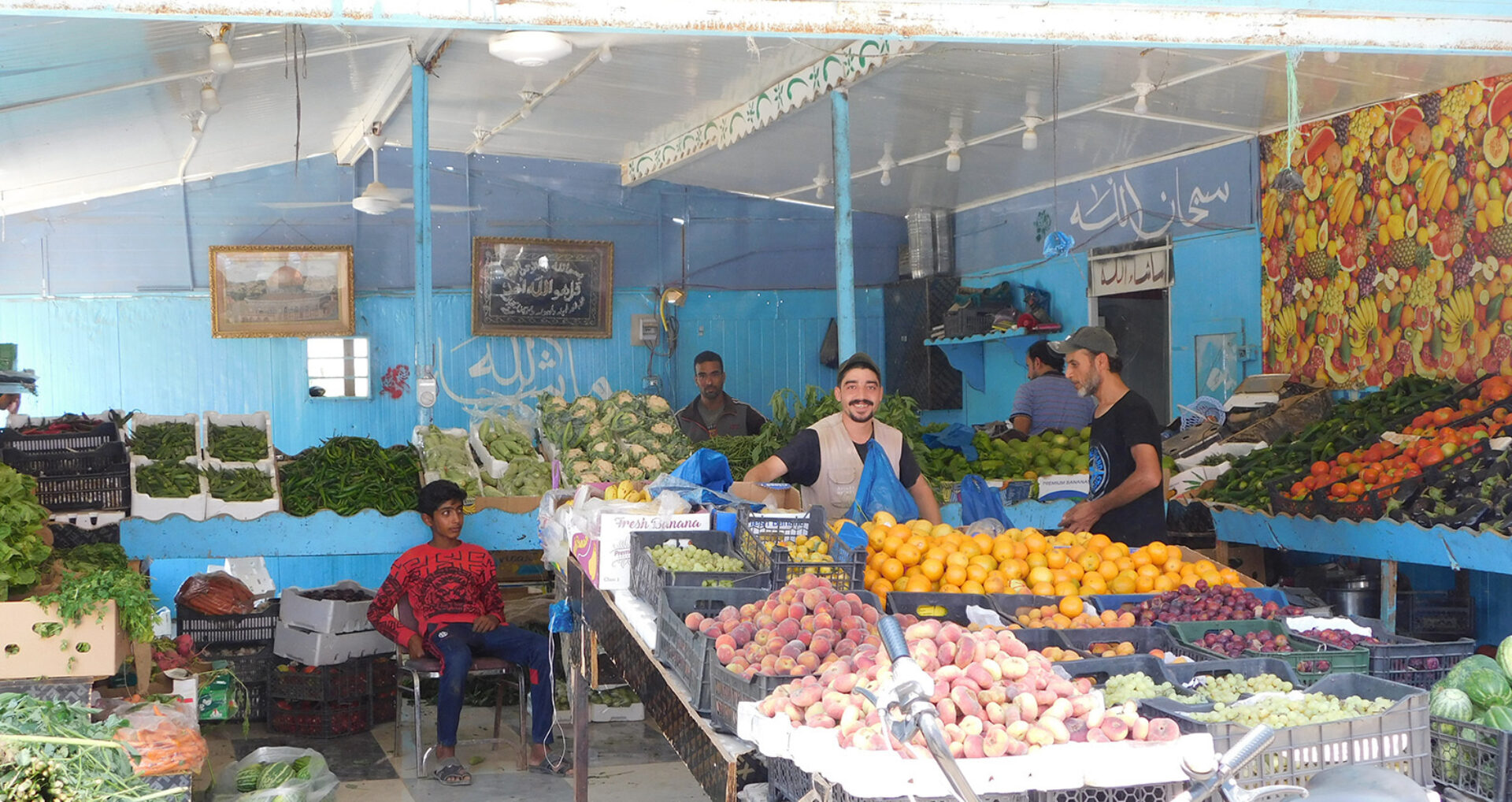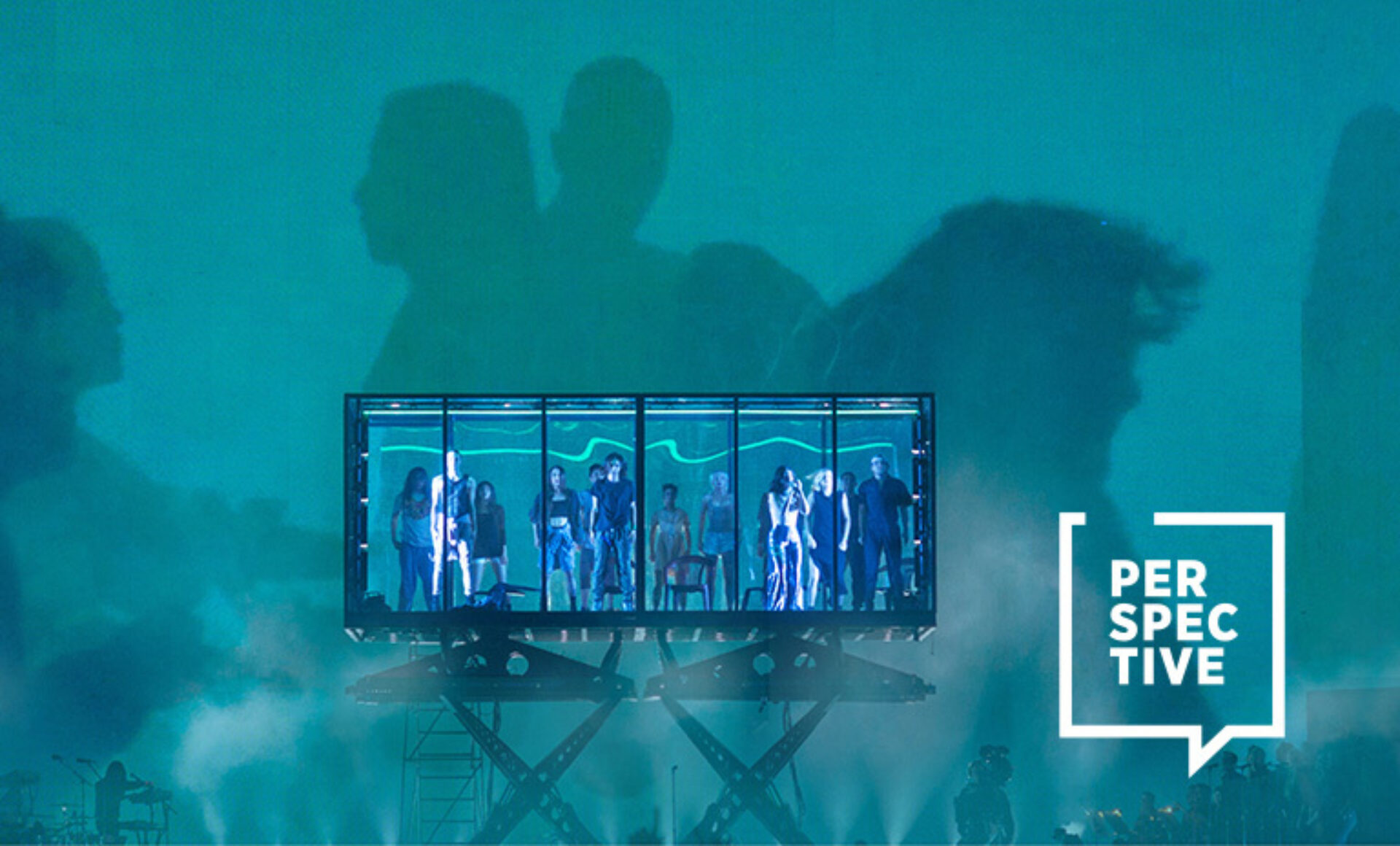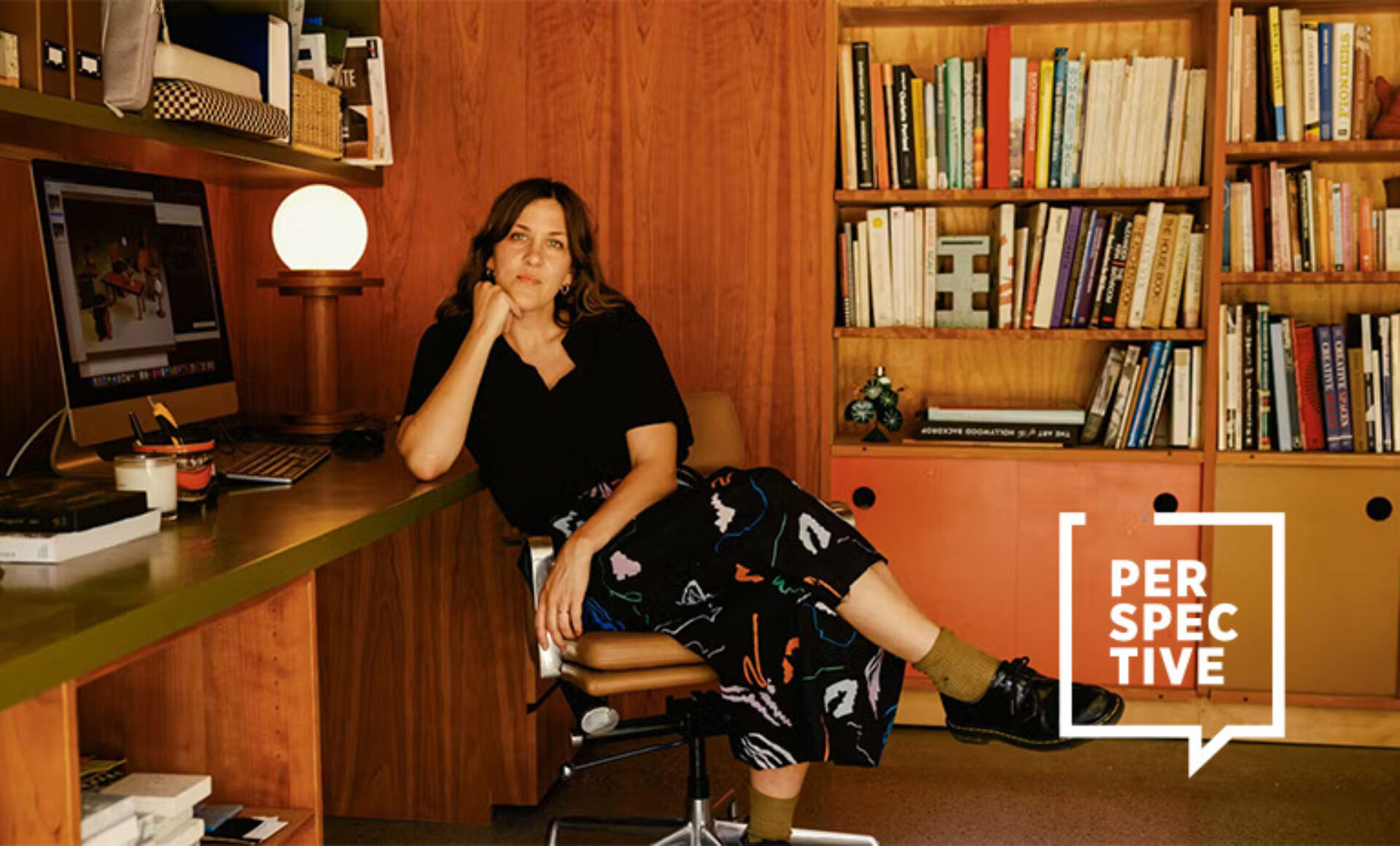(Above: A fruit stand in the Al Zaatari refugee camp in Jordan, the largest Syrian refugee camp in the world.)
When done well, interior design has the ability to empower and protect even the most vulnerable of people — it can even impart a sense of liberation and belonging. By approaching design through a lens of empathy and diversity, we can provide emotional safety, promote well-being, and have an overall positive impact on everyone who moves through a space, especially people who have been historically marginalized. When design educators adopt and share this philosophy, they set students up for a career of socially impactful interior design on a local — and global — level.
Rana Abudayyeh, an associate professor at the University of Tennessee, Knoxville, and the recipient of IIDA’s 2024 Educator Diversity Award, believes that fostering racial and ethnic diversity in the interior design industry is about more than representation — it’s also about checking our own biases at the door, and considering diverse experiences and points of view. This award, in partnership with Interior Design Educators Council Foundation (IDECF), recognizes educators that contribute to the advancement of racial and ethnic diversity in the interior design industry.
“I approach interior architecture not merely as a craft, but as a platform for placemaking and belonging,” she says, describing how her personal experience as an immigrant whose own family was displaced informs her ethos. “I’ve witnessed how interiors can either welcome or alienate. This insight drives my belief that space is not just a setting for life, but a powerful force in shaping identity, memory, and resilience.”
Abudayyeh has been an educator at UT Knoxville’s College of Architecture and Design since 2015, teaching a range of courses — from studios and seminars to design-build projects with the local community — all of which prioritize social justice and encourage students to consider the unspoken politics of space. “My work explores how people adapt their environments to meet their needs,” she says, “and how design can mediate the politics of space to foster more equitable outcomes.”

“When design incorporates diverse voices,” she adds, “it opens the door to creating spaces that are inclusive, healing, and culturally responsive. Design is a tool for empowerment, a platform for social change, and a means to foster belonging for all.”
Abudayyeh recognizes that students may not have exposure to what life looks like outside of their own experiences — something that they need in order to become effective designers. For instance, her students explore how to address overcrowding in underserved schools, how to implement culturally sensitive design for asylum-seeking families learning English as a second language, and how to use design as a bridge to rebuild trust and promote healing in a post-conflict city like Beirut, Lebanon. They learn that design is a catalyst for change, a powerful tool for promoting resilience, community belonging, and identity.
I see teaching as more than just a transfer of knowledge; it’s a catalyst for change, guiding students to become advocates for their communities through their designs.
Rana Abudayyeh
“I encourage students to explore complex issues through research and direct interaction with stakeholders, fostering solutions that address inequities on local and global levels. I see teaching as more than just a transfer of knowledge; it’s a catalyst for change, guiding students to become advocates for their communities through their design.”
She also believes in harnessing data to bring about better design — and social good. In her own design work, Abudayyeh integrates advanced digital tools like computational modeling to achieve a deeper understanding of spatial dynamics, an approach she also teaches students. “This process allows me to develop responsive solutions that accommodate the complexity and evolving nature of social issues. By coupling technology and human-centered design, I strive to create spaces that reflect the diversity and richness of their users.”


Former student and current colleague Pruett Smith, IIDA, describes Abudayyeh as one of the most impactful educators of “my undergraduate and graduate experience,” recognizing the tenets of her teachings as something she strives for in her own work.
“She encourages her students to question their own bias while still encouraging exploration through a personal lens. Her approach to complex and nuanced diverse subjects holds gravity in the classroom while still allowing for a safe space to question and respond to societal issues and disturbances,” Smith adds, all of which is “necessary for a young designer’s growth.”
Former student Marian Siahatgar says of Abudayyeh, “Her selflessness and commitment to diversifying the minds of others are largely what make her an outstanding educator within the interior design field.”
In her research and work outside the classroom, Abudayyeh is collaborating with humanitarian agencies in the Al Zaatari refugee camp in Jordan. The largest Syrian refugee camp in the world, Zaatari houses nearly 80,000 displaced Syrians. Here, Abudayyeh is developing multifunctional interior furniture systems for prefabricated shelters, and implementing green wall systems for vertical farming. She cites her fieldwork and engagement in refugee camps as seminal in her personal and professional development.
This work, she says, “reflect[s] my deep belief in the power of design to address social inequities and improve the quality of life for marginalized and imperiled communities. I remain steadfast in my mission to create inclusive, empowering spaces that foster resilience, agency, and dignity for all.”






